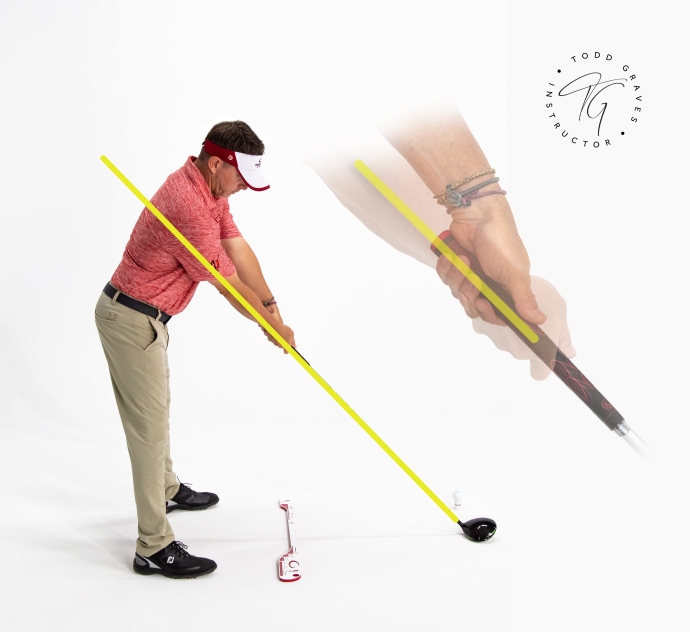I spend much of my time stressing the importance of the Single Plane starting position. It has been my experience that when I am unstable or uncomfortable at address, my ability to strike the ball solid and consistently decreases dramatically. When I feel perfect at address, I am a great ballstriker.
I believe that many golfers take the address position for granted and focus more attention on the motion of their body during the swing.
The address position is more than just standing beside the golf ball holding the club. There are important elements that must be present to engage the body ensuring that the first motion into the backswing, what I call the first move, sets the entire golf swing into the proper sequence.
Club to Body Spatial Relationsihip
At address, there are two straight lines formed between the arms and the club. These two lines form a “club to body” relationship. The relationship is spatial allowing the arms to easily return the club to impact. Let’s take a close look at these two lines and the relationship that is formed.
Down-the-Line (Single Plane) – the First Line

This angle shows the alignment of the club with the trail arm into a straight line. The club is NOT aligned with the lead arm from this angle. If I removed the trail arm from the club, the club would align below the lead arm.

This is due to the club being held in the fingers of the lead hand into the heel pad.

Face-on-View – The Second Line
The second line can be seen from the face-on perspective where the club shaft aligns with the lead arm to the lead shoulder.

This alignment is a function and created by the tilt of the body. The tilt of the body lifts the shoulder where you can see the extension which is where tension is felt. This is the area where the body feels engaged and ready to move. The motion of the swing starts at the lead shoulder area because of this tension.

When the body is engaged, there is tension as various points feeling as though at these places you are in a “ready” state. As the body prepares to make the first move into the backswing, with the proper tension at these places, the body is stable. Stability at the correct places allows for the proper movement sequence.

With the tension and stability in the correct areas of the body, there are also places that are relaxed, mostly in the trail side. Instead of tension, these areas are “soft” and relaxed. See the diagram where the blue shaded areas mark the places in the body were there is very little tension. 
With the body engaged and relaxed in the correct places, you are ready to initiate the correct movement into the backswing. Each aspect of the body’s position promotes proper movement. The details of these aspects are an important part of biomechanics and swing sequence. You can find out more about how each detail of the swing affects the swing in its entirety in my latest DVD product, the Domino Effect, Back to Basics where I discuss, in detail, each aspect of the Single Plane Golf Swing.
The Domino Effect – Back to Basics


Great article Todd as always! https://www.psychologytoday.com/us/blog/the-blame-game/201202/the-domino-effect
LikeLike
Todd, my left thumb is deformed; it was broken in a car accident and cannot be placed vertically down
the shaft. How do I compensate for this? Thank you, Pete Cardone.
LikeLike
Fantastic. To be referred to over and over again
LikeLike